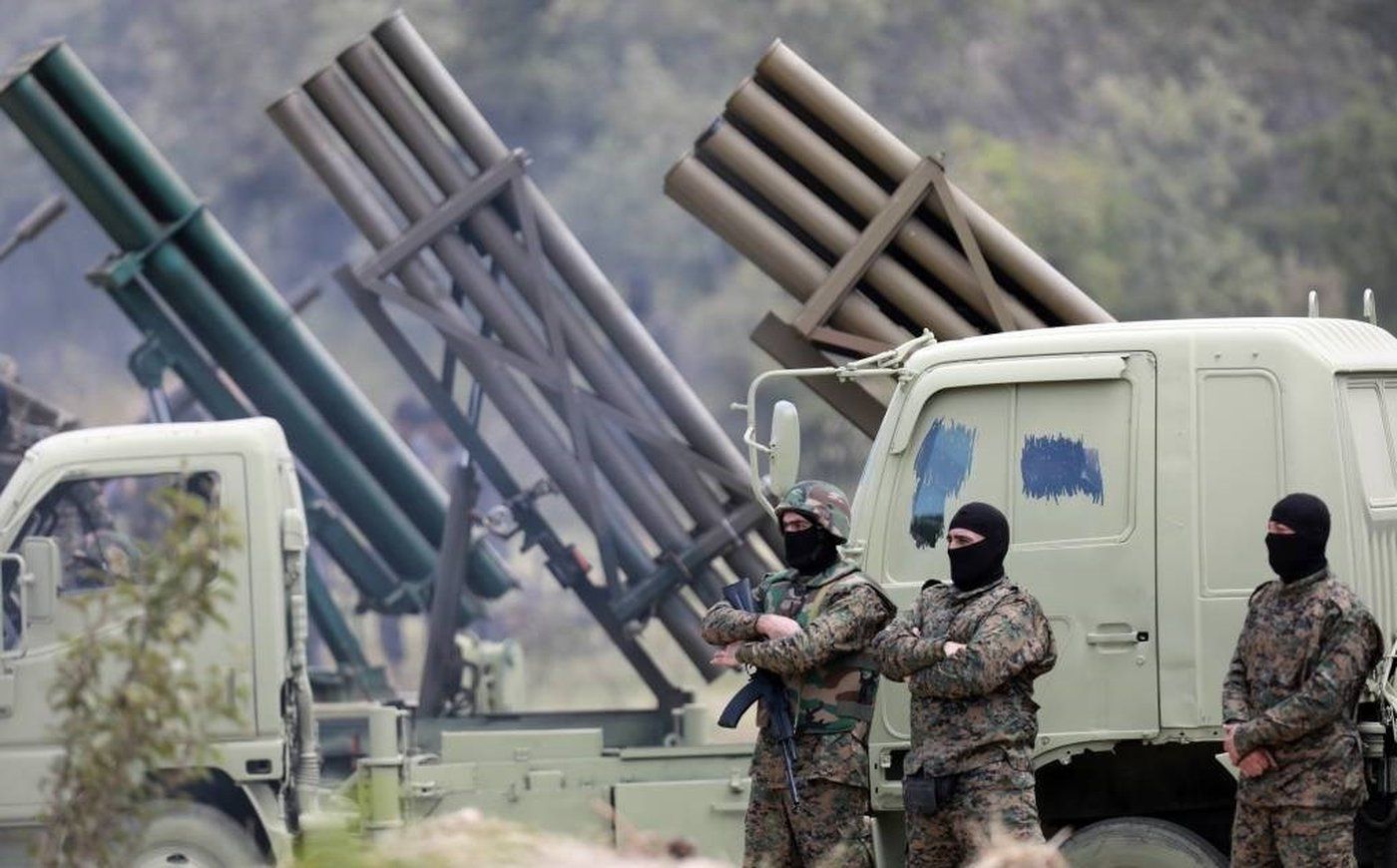When Hezbollah launched more than 300 rockets at Israel from southern Lebanon on August 25, some commentators warned this could embroil the United States and its allies, Iran and even China and Russia, in a broader regional war.
Much has already been written about the potential dangers of the war between Hamas and Israel expanding into a more damaging and unpredictable conflict between Israel and Hezbollah.
While the chance of a broader conflict remains a possibility, the differences between the rhetoric from both Israel and Hezbollah and the military and political realities they face are stark.
The rockets used by Hezbollah were reportedly Katyusha rockets, which are unguided, sub-sonic projectiles with a limited range of approximately 12km and with relatively small warheads.
This makes them easy prey for Israel's Iron Dome. While Hezbollah possesses more sophisticated missiles, it is telling that they were not used to threaten major cities such as Tel Aviv. This makes Hezbollah's attack largely symbolic.
It allowed Hezbollah to demonstrate its continuing resistance to Israeli aggression without any miscalculation that might invite a more damaging Israeli response.
From Israel's perspective, its response was measured, allowing its government to claim success at limiting Hezbollah's attack while also avoiding any miscalculation and risking the unpredictability of a greater conflict.
The key takeaway from this latest confrontation is that while both sides are eager to engage in deterrence, they remain cautious about risking the volatility of a wider conflict.
Lessons from history
There is no disguising the level of animosity between Israel and Hezbollah. It was Israel's invasion of Lebanon in 1982 and its subsequent occupation of southern Lebanon and Beirut that forced Lebanese Shi'a militias to form Hezbollah (The Party of God) to resist the occupation.
Hezbollah still classifies itself as a resistance movement and achieves a good portion of its legitimacy through its willingness to confront Israel rhetorically, politically and occasionally militarily.
However, Hezbollah needs to show caution. While its military is sizable, it is at best a well-trained, but moderately equipped paramilitary, especially when compared to Israel's highly sophisticated, well-equipped, and battle-hardened military.
Hezbollah lacks many of the sophisticated weapons, equipment, command, control, and communication (C3) facilities that modern militaries like Israel possess in quantity and quality.
This is especially true when considering Hezbollah's lack of an air defence capability.
Given Israel's chastening experience attacking Hezbollah on the ground in 2006, any future Israeli attack will almost certainly come from the air.
While Hezbollah possesses surface-to-air missiles, these are limited both in number and quality. Hezbollah is also unlikely to have the C3 capability and training to mount a successful and sustained air defence that is in any way comparable to Israel's "Iron Dome".
Thus, in any future war, Israel will dominate Lebanese airspace meaning it can strike Hezbollah's military, political, and logistical infrastructure with virtual impunity.
Beirut in the crosshairs?
Additionally, Israel has warned previously that it will not distinguish between Hezbollah and non-Hezbollah targets in Lebanon should a full-scale war erupt.
In December, Israel's defence minister Yoav Gallant told reporters, "What we are doing in Gaza, we can do in Beirut," when questioned about the potential of a wider war.
This makes Hezbollah responsible for any destruction in Lebanon caused by any war. Given Lebanon's precarious economic situation, it simply could not endure the wholesale economic and societal destruction and dislocation that would inevitably accompany any prolonged war with Israel.
Additionally, Lebanon's current government, which includes Hezbollah, has been in caretaker mode since 2022. With no agreement on who should assume the presidency, it lacks the ability to respond to crises.
Hezbollah will want to avoid risking further domestic political strife that could adversely affect its position in government and support, even among Lebanese Shi'a, if it were to provoke a war with Israel.
From Israel's perspective, too, there are pressing military and political realities that would discourage any war with Hezbollah.
Militarily, Israel remains heavily engaged in its offensives against Hamas in Gaza, and it simply does not possess the military and logistical capacity to conduct two separate major ground offensives simultaneously.
Former senior Israeli military commanders have already expressed public disquiet about the inflammatory language from some politicians about Israel's apparent readiness to open a second front in Lebanon.
Since 2006, Hezbollah has improved its offensive and defensive capabilities. What would be particularly concerning for Israel is the threat posed by Hezbollah drones. As events in Israel and Ukraine demonstrate clearly, they are difficult to detect and intercept consistently.
The threat of drones
While any actual damage to Israeli infrastructure inflicted by drone attacks may be minimal, the symbolism of that damage and any civilian deaths/injuries would be enormous.
In July, a drone attack launched by the Yemen-based Houthis managed to go undetected into Tel Aviv, just blocks from the US Embassy, killing one 50-year-old man and injuring eight other people.
The fear and uncertainty in Israel are already creating societal dislocation, and it is unclear how Israeli society would deal with the unpredictability of a sustained campaign of Hezbollah drone strikes that could feasibly reach all significant population centers.
The Israeli public is already war-weary with no foreseeable end and with dozens of hostages still to be repatriated.
There is also growing disquiet that PM Netanyahu is prolonging the conflict in Gaza to forestall the collapse of his government and his ouster from the prime ministership.
Instigating another conflict against a more powerful enemy in Hezbollah, with the potential of dragging Israel into another war of unknown duration and severity, may prove too much for the Israeli public.
(The author is a lecturer in terrorism and international security at The University of Sydney. His research interests include Middle East politics, the political/electoral participation of Islamist movements, and the role of political violence in the organizational narratives of militant movements)

